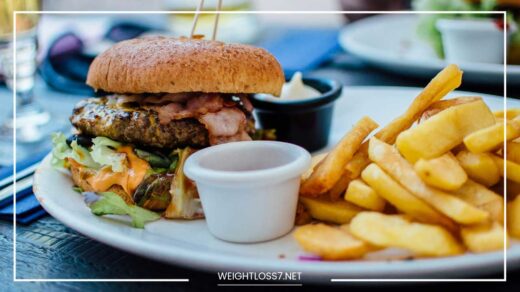How to Reduce Body Fat

Reduce Body Fat
Shedding Fat: A Sustainable Guide to Reducing Body Fat
Body fat. It’s a term that can evoke frustration and conjure up images of countless fad diets promising unrealistic results.
But the truth is, reducing body fat is about creating a healthy lifestyle you can maintain, not a quick fix. This comprehensive guide will equip you with the knowledge and strategies to achieve your body composition goals in a safe and sustainable way.
Understanding Body Fat: Friend or Foe?
Before we delve into strategies, let’s explore what body fat is and why it matters. Body fat plays a crucial role in our bodies. It stores energy, insulates vital organs, and aids in hormone production.
However, excess body fat, particularly visceral fat located around your organs, is linked to a multitude of health problems including heart disease, type 2 diabetes, and certain cancers.
There are various methods for measuring body fat percentage, such as bioelectrical impedance analysis (BIA) scales and skin fold calipers.
However, a simple body mass index (BMI) can be a starting point. While BMI isn’t a perfect measure, it can indicate a general weight range for your height.
It’s important to remember that BMI doesn’t differentiate between muscle mass and fat mass. An individual with a high amount of muscle mass may have a high BMI despite having a low body fat percentage.
Fueling Your Body for Success: The Power of Diet
What you eat significantly impacts your body fat percentage. Here are some key dietary strategies you can incorporate to reduce body fat:
- Embrace Whole Foods: Fill your plate with unprocessed, nutrient-dense whole foods like fruits, vegetables, whole grains, lean protein sources, and healthy fats. These foods provide essential vitamins, minerals, and fiber that keep you feeling full and support a healthy metabolism.
- Prioritize Protein: Protein is a critical building block for muscle mass, which burns more calories at rest. Include lean protein sources like chicken, fish, beans, lentils, and tofu in your meals and snacks.
- Healthy Fats are Your Ally: Contrary to popular belief, healthy fats found in avocados, nuts, seeds, olive oil, and fatty fish are crucial for hormone regulation, satiety, and nutrient absorption. They also help you feel more satisfied, reducing cravings for unhealthy fats.
- Limit Added Sugars and Refined Carbs: Sugary drinks, processed snacks, and refined carbohydrates like white bread and pastries can spike blood sugar levels, leading to cravings and overeating. Opt for complex carbohydrates like whole grains and pair them with protein and healthy fats to promote sustained energy and satiety.
- Fiber is Your Friend: Fiber promotes healthy gut bacteria, keeps you feeling full, and aids in digestion. Aim for high-fiber foods like fruits, vegetables, legumes, and whole grains.
- Mindful Eating: Pay close attention to your hunger and fullness cues. Eat slowly, savor your food, and avoid distractions while eating. This mindful approach can help you avoid overeating and make more conscious choices about what you consume.
Creating a Sustainable Calorie Deficit: The Math Behind Fat Loss
For body fat reduction, you need to create a calorie deficit, meaning you burn more calories than you consume. However, drastic calorie restriction is counterproductive and unsustainable.
It can lead to muscle loss, decreased metabolism, and fatigue. Aim for a moderate calorie deficit of 300-500 calories per day.
This gradual approach helps preserve muscle mass and keeps your metabolism functioning optimally. There are numerous online calculators and mobile apps that can help you determine your daily calorie needs based on your age, weight, height, and activity level.
Exercise: Your Body in Motion – A Two-Pronged Approach
Exercise plays a vital role in reducing body fat and building a healthy physique. Here’s a two-pronged approach that combines cardio and strength training for optimal results:
- Cardio: The Calorie Burner: Aim for at least 150 minutes of moderate-intensity cardio or 75 minutes of vigorous-intensity cardio per week. Activities like brisk walking, running, swimming, cycling, and dancing are excellent options. Cardio helps you burn calories efficiently, improve your cardiovascular health, and boost your overall fitness level.
- Strength Training: Building Muscle, Boosting Metabolism: Don’t underestimate the power of strength training. Building muscle mass increases your metabolic rate, meaning you burn more calories even at rest. Include strength training exercises that target all major muscle groups 2-3 times per week. You can use bodyweight exercises, free weights, or weight machines. Strength training also improves bone density, reduces your risk of injury, and promotes better posture and balance.
Making it a Lifestyle: From Intention to Action
Reducing body fat is a journey, not a destination. Here are some tips to ensure your healthy habits become a sustainable part of your life:
- Your Daily Routine: Integrate your healthy habits into your daily routine. Schedule your workouts, prep healthy meals in advance, and pack healthy snacks to avoid unhealthy temptations on the go. The more routine these habits become, the easier they are to maintain.
- Make it Enjoyable: Find activities and foods you genuinely enjoy. Explore different exercise styles, experiment with healthy recipes, and discover new ways to move your body. When you enjoy the process, you’re more likely to stick with it in the long run.
- Focus on Progress, Not Perfection: There will be setbacks and slip-ups. Don’t let them derail your progress. Celebrate your victories, big and small, and get back on track when you stumble. Remember, consistency is key, not perfection.
- Mindset Matters: Cultivate a positive mindset. Focus on how healthy habits make you feel – energized, strong, and confident. Visualize yourself achieving your goals and celebrate the non-scale victories like improved sleep, better mood, and increased energy levels.
- Find Your WHY: Connect with your deeper purpose for wanting to reduce body fat. Is it about improving your health, boosting your energy levels, or feeling more confident in your own skin? A strong “why” will fuel your motivation and help you persevere when challenges arise.
Sustainable Habits for Long-Term Success:
- Set SMART Goals:
Specific, Measurable, Achievable, Relevant, and Time-bound goals will help you stay on track. Instead of a vague goal of “losing weight,” set a SMART goal like “losing 5 pounds in 8 weeks by incorporating 30 minutes of cardio three times a week and strength training twice a week.” - Find an Exercise You Enjoy: Consistency is key. Explore different activities like dancing, hiking, rock climbing, or team sports to find something you genuinely enjoy. When exercise feels like fun, you’re more likely to stick with it in the long run.
- Plan Your Meals: Planning meals and snacks beforehand helps you make healthy choices, avoid unhealthy temptations, and stay within your calorie goals. Meal prepping on weekends can be a great time-saver.
- Don’t Deprive Yourself: Allow yourself occasional treats in moderation. Deprivation can lead to cravings and binge eating. Aim for an 80/20 approach: focus on healthy choices 80% of the time and allow yourself some flexibility 20% of the time.
- Find a Support System: Surround yourself with people who support your health goals. Enlist a workout buddy or join a fitness community for motivation and accountability. Having someone to celebrate your successes and commiserate with your setbacks can make a big difference.
- Focus on Progress, Not Perfection: There will be setbacks. Don’t get discouraged by occasional slip-ups. Celebrate your progress, no matter how small, and get back on track when you deviate from your plan. Remember, progress, not perfection, is the key to long-term success.
Optimizing Your Journey: Beyond Diet and Exercise
While diet and exercise are the cornerstones of reducing body fat, other factors can influence your results:
- Sleep: Aim for 7-8 hours of quality sleep each night. Sleep deprivation can disrupt hormones that regulate appetite and metabolism, leading to increased cravings and decreased calorie burning. Establish a consistent sleep schedule and create a relaxing bedtime routine to promote better sleep hygiene.
- Stress Management: Chronic stress can elevate cortisol levels, a hormone that promotes fat storage, particularly around the belly. Find healthy ways to manage stress, such as yoga, meditation, deep breathing exercises, or spending time in nature.
- Hydration: Staying adequately hydrated is crucial for overall health and can also aid in weight management. Aim to drink plenty of water throughout the day.
- Strength Training for Women: Strength training is often overlooked by women who fear becoming bulky. However, strength training helps build lean muscle, which boosts metabolism and promotes a toned physique.
- Individualized Approach: It’s important to recognize that everyone’s body is different and responds differently to diet and exercise. If you have any underlying health conditions, consult a doctor or registered dietitian before making significant changes to your diet or exercise routine. They can help you create a personalized plan that is safe and effective for you.
Building a Positive Relationship with Food and Your Body
Developing a healthy relationship with food and your body is essential for long-term success. Here are some tips:
- Practice Gratitude: Appreciate your body for all that it does for you. Focus on how strong and capable your body is, rather than fixating on perceived flaws.
- Intuitive Eating: Learn to listen to your body’s hunger and fullness cues. Eat when you’re hungry and stop when you’re comfortably full.
- Mindful Movement: Approach exercise with a sense of self-care and appreciation for your body’s capabilities. Focus on how exercise makes you feel strong and energized, rather than just a means to burn calories.
Beyond the Basics: Advanced Strategies for Fat Loss
Once you’ve established a solid foundation with diet, exercise, and healthy lifestyle habits, you can explore some advanced strategies to further optimize your fat loss journey.
However, it’s important to consult with a healthcare professional or registered dietitian before implementing these approaches:
- High-Intensity Interval Training (HIIT): HIIT involves alternating between short bursts of intense exercise and periods of recovery. This style of training can be very effective for burning calories and boosting metabolism in a shorter amount of time compared to traditional steady-state cardio. However, HIIT can be demanding, so it’s best suited for individuals with a good baseline fitness level.
- Carb Cycling: Carb cycling involves strategically manipulating your carbohydrate intake throughout the week. This approach can help regulate blood sugar levels, prevent metabolic slowdown, and potentially enhance fat burning. However, carb cycling can be complex and requires careful planning.
- Intermittent Fasting (IF): IF is an eating pattern that cycles between periods of eating and fasting. There are various IF protocols, such as the 16/8 method (fasting for 16 hours and eating within an 8-hour window). IF can be an effective tool for weight management, but it’s not suitable for everyone. It’s crucial to discuss IF with your doctor before starting, especially if you have any underlying health conditions.
Understanding Macronutrients: The Building Blocks of Your Diet
Macronutrients, including carbohydrates, protein, and fat, are essential nutrients your body needs for energy and various functions. Understanding the role of each macronutrient can help you tailor your diet for optimal fat loss:
- Carbohydrates: Carbs provide readily available energy for your body. Focus on complex carbohydrates found in whole grains, fruits, and vegetables. These provide sustained energy and essential fiber compared to refined carbohydrates like white bread, pastries, and sugary drinks.
- Protein: Protein is crucial for building and repairing muscle tissue, which plays a vital role in metabolism. Aim for a moderate intake of protein throughout the day from sources like lean meats, fish, eggs, legumes, and dairy products.
- Fat: Healthy fats are essential for hormone regulation, satiety, and nutrient absorption. Include healthy fats from sources like avocados, nuts, seeds, olive oil, and fatty fish in your diet.
Finding the Right Balance: The ideal macronutrient ratio for you depends on several factors, including your activity level, overall health goals, and body composition. Consult a registered dietitian to create a personalized macronutrient plan that aligns with your needs.
Sample Meal Plan for Fat Loss
Here’s a sample meal plan to illustrate how you can incorporate these principles into your daily routine. Remember, this is just a sample, and you may need to adjust it based on your individual needs and preferences.
- Breakfast: Greek yogurt with berries and chia seeds, or scrambled eggs with spinach and whole-wheat toast
- Lunch: Grilled chicken breast with a side salad and quinoa, or lentil soup with a whole-wheat roll
- Dinner: Salmon with roasted vegetables and brown rice, or tofu stir-fry with whole-wheat noodles
- Snacks: Fruits with nut butter, vegetable sticks with hummus, or a handful of mixed nuts
Staying Motivated on Your Journey
Motivation is key to long-term success. Here are some tips to stay motivated:
- Set Realistic Expectations: Aim for gradual and sustainable weight loss. Rapid weight loss is often difficult to maintain and can be unhealthy.
- Track Your Progress: Monitor your weight, body measurements, and how your clothes fit. Celebrate your non-scale victories like increased energy levels, improved strength, and better sleep.
- Find Inspiration: Surround yourself with positive influences. Follow fitness accounts on social media, read inspiring stories, or watch motivational videos.
- Reward Yourself: Celebrate your milestones with non-food rewards like a massage, a new workout outfit, or a fun activity.
Remember: Reducing body fat is a marathon, not a sprint. Be patient, consistent, and kind to yourself throughout the journey. By incorporating these strategies and developing a healthy relationship with food and exercise, you can achieve your goals and feel your best.
Final Word: A Journey of Self-Discovery
Reducing body fat is not just about achieving a certain number on the scale. It’s a journey of self-discovery, learning to nourish your body with healthy foods, and moving your body in ways you enjoy.
By incorporating these strategies into your lifestyle, you can create sustainable habits that promote long-term health, well-being, and a positive body image.
Remember, it’s not about achieving perfection; it’s about progress and making healthy choices most of the time. With dedication and a positive mindset, you can reach your body composition goals and feel your best.

















